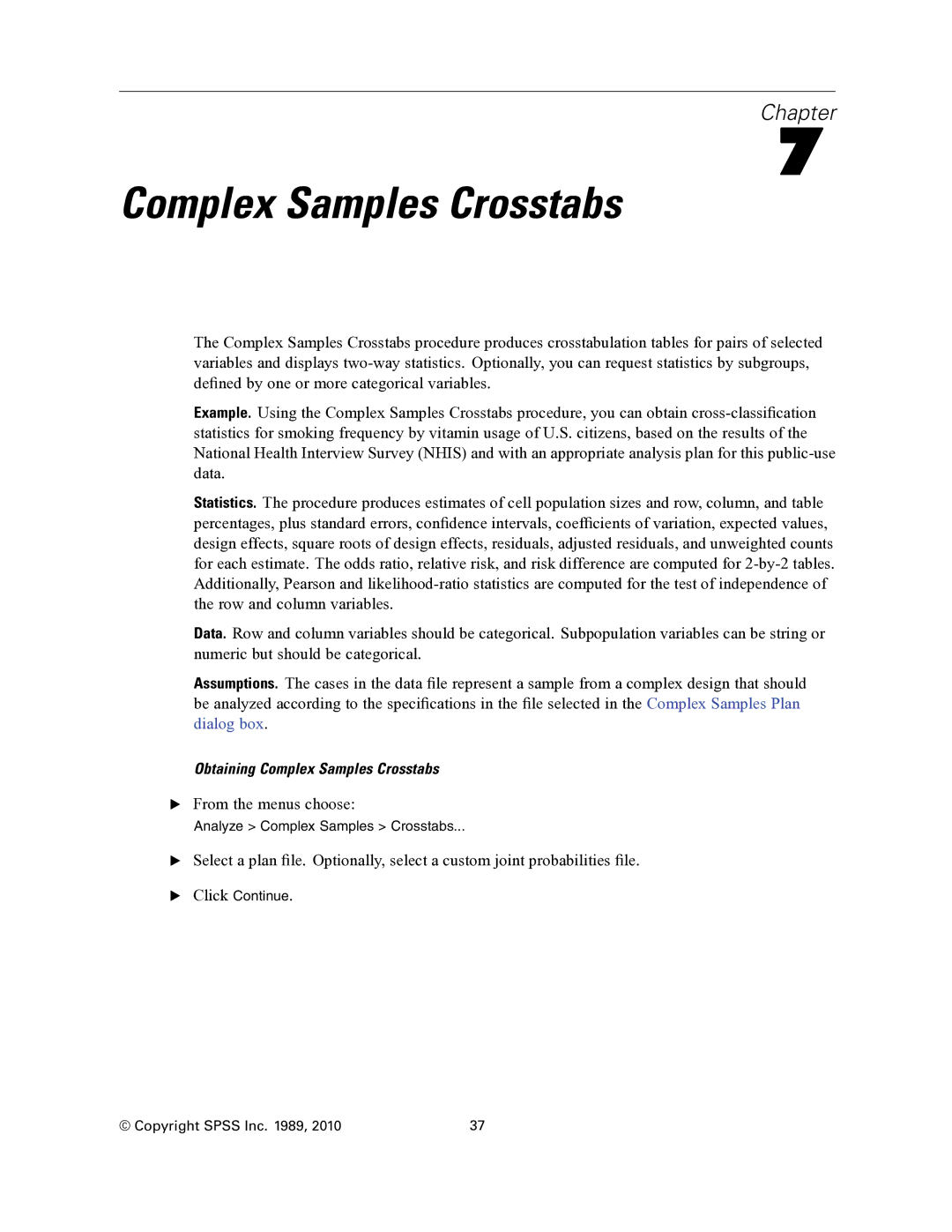Chapter
7
Complex Samples Crosstabs
The Complex Samples Crosstabs procedure produces crosstabulation tables for pairs of selected variables and displays
Example. Using the Complex Samples Crosstabs procedure, you can obtain
Statistics. The procedure produces estimates of cell population sizes and row, column, and table percentages, plus standard errors, confidence intervals, coefficients of variation, expected values, design effects, square roots of design effects, residuals, adjusted residuals, and unweighted counts for each estimate. The odds ratio, relative risk, and risk difference are computed for
Data. Row and column variables should be categorical. Subpopulation variables can be string or numeric but should be categorical.
Assumptions. The cases in the data file represent a sample from a complex design that should be analyzed according to the specifications in the file selected in the Complex Samples Plan dialog box.
Obtaining Complex Samples Crosstabs
EFrom the menus choose:
Analyze > Complex Samples > Crosstabs...
ESelect a plan file. Optionally, select a custom joint probabilities file.
EClick Continue.
© Copyright SPSS Inc. 1989, 2010 | 37 |
